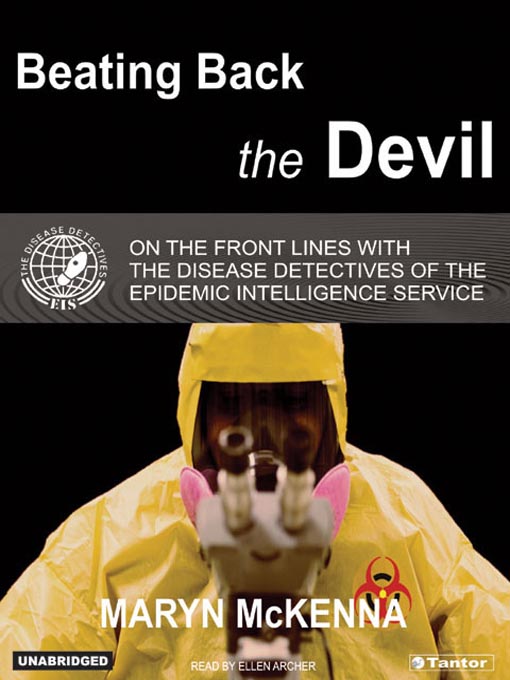Beating Back the Devil
On the Front Lines with the Disease Detectives of the Epidemic Intelligence Service
They always keep a bag packed. They seldom have more than twenty-four hours' notice before they are dispatched. The phone calls that tell them to head to the airport, sometimes in the middle of the night, may give them no more information than the country they are traveling to and the epidemic they will tackle when they get there.
The universal human instinct is to run from an outbreak of disease. These doctors run toward it.
They are the disease detective corps of the U.S. Centers for Disease Control and Prevention (CDC), the federal agency that tracks and tries to prevent disease outbreaks and bioterrorist attacks around the world. They are formally called the Epidemic Intelligence Service (EIS) — a group founded more than fifty years ago out of fear that the Korean War might bring the use of biological weapons — and, like intelligence operatives in the traditional sense, they perform their work largely in anonymity. They are not household names, but over the years they were first to confront the outbreaks that became known as hantavirus, Ebola virus, and AIDS. Now they hunt down the deadly threats that dominate our headlines: West Nile virus, anthrax, and SARS.
In this riveting narrative, Maryn McKenna — the only journalist ever given full access to the EIS in its fifty-three-year history — follows the first class of disease detectives to come to the CDC after September 11, the first to confront not just naturally occurring outbreaks but the man-made threat of bioterrorism. They are talented researchers — many with young families — who trade two years of low pay and extremely long hours for the chance to be part of the group that has helped eradicate smallpox, push back polio, and solve the first major outbreaks of Legionnaires' disease, toxic shock syndrome, and E. coli O157.
Urgent, exhilarating, and compelling, Beating Back the Devil goes with the EIS as they try to stop epidemics — before the epidemics stop us.
-
Creators
-
Publisher
-
Release date
October 15, 2004 -
Formats
-
OverDrive Listen audiobook
- ISBN: 9781400121403
- File size: 277357 KB
- Duration: 09:37:49
-
-
Languages
- English
-
Reviews
-
Publisher's Weekly
August 1, 2004
Founded in 1951 because of a mistaken concern that troops in Korea had been exposed to biological weapons, the Epidemic Intelligence Service, or EIS, is the rapid-response force of the U.S. Centers for Disease Control and Prevention."Young, highly trained, and fiercely committed," EIS health professionals, including doctors, dentists, nurses and veterinarians, respond rapidly and travel to any area of the world to examine possible threats to public health. Given unique access to the EIS, McKenna presents 11 case studies of epidemics, environmental threats and acts of terrorism EIS has dealt with. McKenna puts readers on the scene with doctors discovering the beginnings of the AIDS epidemic in 1980. She tells of an EIS team that in 1994 traveled to Zaire to assist in a cholera epidemic sparked by a genocidal war. After 9/11, EIS investigated the anthrax attacks that were spread through the mails. McKenna, a senior medical writer at the Atlanta Journal-Constitution, provides an inside look at how EIS workers are trained. Recruits, selected through a competitive process, are given refresher courses in epidemiology, statistical analysis and interviewing techniques before beginning a two-year on-the-job training. McKenna's personal portraits of these dedicated health professionals illuminate the bravery as well as the anxiety that accompany this demanding work.
-
Loading
Why is availability limited?
×Availability can change throughout the month based on the library's budget. You can still place a hold on the title, and your hold will be automatically filled as soon as the title is available again.
The Kindle Book format for this title is not supported on:
×Read-along ebook
×The OverDrive Read format of this ebook has professional narration that plays while you read in your browser. Learn more here.

